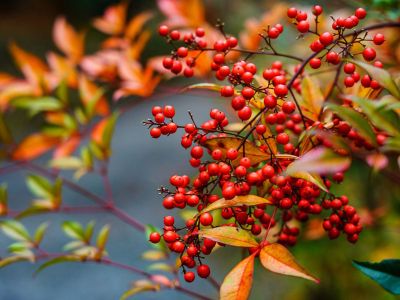Are Nandina Berries Poisonous?
Nandina shrubs have many traits that make them appealing to gardeners. These plants have year-round interest with spring flowers, ornamental fruits, and sometimes autumn color. They tolerate drought, shade, and salt and are quite resistant to damage by deer. In addition, they are free of serious pest issues. However, before planting nandina shrubs, you need to read up on heavenly bamboo berries and birds. One of the most ornamental features of this bush is its shiny red berries, quite similar to holly berries. Unlike holly, however, these can be toxic berries to birds.
Do Nandina Berries Kill Birds?
Nandina berries and foliage can be dangerous for livestock and household pets if eaten. The berries are toxic to birds as well. Thankfully, they are not the first food choice of wild birds but some species, including cedar waxwing, northern mockingbird, and American robin, eat the berries if nothing else is available. Nandina berries kill birds when enough are eaten. Other factors are believed to be involved as well. Swings in temperatures and lack of sufficient water can cause plant species to produce cyanide in greater concentrations. Combine that type of weather pattern with the voracious eating habits of some migratory birds that gorge themselves on berries. It is no wonder that hundreds can die, especially when the berries are overripe.
Heavenly Bamboo Berries and Birds
Heavenly bamboo berries and birds are also related in another way. One of the downsides of these shrubs is their invasiveness. They propagate readily from the seeds in their berries. If berries are simply allowed to fall beneath the tree canopy, the gardener can weed out unwanted plants. Heavenly bamboo berries and birds, taken together, can spread the species into wild areas. If you want to plant nandina while avoiding invasiveness and bird mortality issues, you should plant fruitless cultivars, or at the very least, trim the bush prior to berry production or cut them as soon as they develop.
